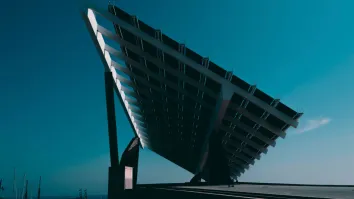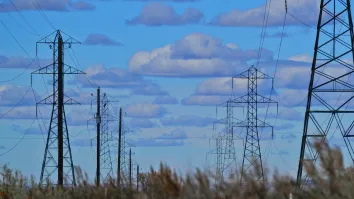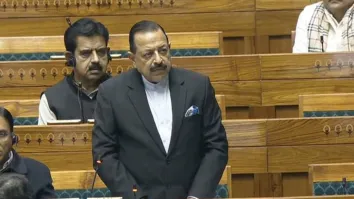Can green technology really save the planet?
By Matthias GelberFor more than 10 000 years the climate and CO2 concentration has been very stable, but now we humans are pushing it to a dangerous level.
Now it has gone beyond 400 parts per million as a measurment of the concentration of the CO2 in the air, which has reached a problematic level. Even today I am reading on the front page of the local newspaper “climate change strikes us with full force”
I am going to share my thoughts from a very subjective personal point of view. I might be biased as I am Involved in 2 of the technologies I am going to outline here, but overall I think it’s time for a radical shift, and radical change.
We’ve been talking for many, many years about the need for radical climate change action. There is a pretty much good consensus in the scientific literature that the instability of climate pattern is down to human activity.
If you look back since the industrial revolution, we humans are squeezing out the oil, the gas, the coal, whatever we can find it out of the crust of the earth to fuel our economic growth. It is not surprising that the loading of the earth’s atmosphere with carbon dioxide and other greenhouse gas related emissions has an effect on the planet.
The impact derives largely from our human intervention into the balance of the eco system.
We are really squeezing the planet and we are doing it in a very short time frame looking at the history of the planet. I saw a statistic the other day that we have had 10,000 years of very stable CO2 emission concentrations but now we are already beyond 400 parts per million.
The target that has been touted as what we need to achieve to have stabilization of the climate is 380 parts per million – we are already beyond this at dangerous levels.
A lot of talks have happened, a lot of agreements have been made through the Kyoto protocol but little successful climate change impact - we are still lacking any substantial change.
Alternative technological solutions, like solar and wind power, have only been successful in pockets of the global economy, particularly in countries that have been given massive subsidies such as Germany where the solar industry has emerged with over 20 gigawatts of installed capacity.
Now these are exceptions not the norm, but statements like those coming from Saudi Arabia that they are planning to install 40 gigawatts of solar concentrated technology and solar PV over the next 5 years is encouraging.
I think they have realized that burning their oil and gas is going to be much more expensive than putting solar farms on desert where there is plenty of space available. The only challenge that they are facing currently there is heat and sand, as solar PV panels in particular have to be kept free of dust to deliver optimum outputs.
In addition to the increasing economic efficiency of solar, it is socially highly benefitial that solar creates a lot more jobs than other forms of power production!
Then on the other hand, when I look at the country where I am currently living and residing, Malaysia, has currently set a 40 percent carbon intensity reduction target.
However the trends are different, as 2 massive coal fired power plants are just in the process of being commissioned and there are still signs of power hungry population and industry driving up energy consumption, with limited efforts going into energy efficiency.
And cost of electricity is massively subsidized by the government - money which encourages wastage instead of efficiency which would overall reduce energy consumption.
Energy efficiency as a priority policy for Malaysia would be ideal to support the developed country nation status which is aspired for 2020. Developed countries have usually very energy efficient economies, because you cannot afford to throw away too much of money by running your economy in an inefficient state of affairs.
So the game is on, we need to find opportunities to shift, we need to find opportunities to really make a difference, and we need to find technologies that can turn around the tide from more and more and more CO2 emission.
In the course of managing our global economy with more than 7 billion humans on the Planet, we need to shift to more eco efficiency.
Let me give you 2 examples that I am personally involved in that are rather difficult to implement on a large scale because particularly at this current point in time, (I would put it like this) there is a lack of commitment and of faith in investing in Green technology; mainly because some of these industries have been choppy from an investor’s point of view with regards to return of investment.
Also some of them rely very much on government policies, and other industries are so locked up and closed by conventional power sources or technologies that it is very hard for new and emerging technologies to find their road in the marketplace.
Several very high profile solar companies have declared bankruptcy including (in the U.S) Solera, (in China) Suntech (China’s biggest solar company), QCells from Germany was recently taken over by the Korean company Han Wah, so overall confidence in this sector is rock bottom, little bit like the dot.com bust early 2000.
Or maybe when the semiconductor industry had a consolidation period in the late 60’s and early 70’s; and interestingly enough, the trend of solar cell sales look very very similar to the trend of semiconductors where you had massive growth, slight consolidation and massive rise again to much much greater heights.
I personally think we’ll see the same with solar.
The fact that solar panel prices are coming massively down some years ago from $1.50 to $0.70 or $0.80 per watt is a huge significant change that makes solar now as an energy source competitive compared to conventional fossil fuel based industries. And you do not have fuel price fluctuations like for coal of gas – the sun keeps hitting the panels free of charge.
Here in Malaysia there are discussions about planning and then switching on a nuclear power plant in 2020. I am very convinced that solar will be very much cheaper by then in Malaysia and will generate much more local jobs.
Price of Nuclear power is going up as people realize they need much more security measures after Fukushima, some extra measures are being installed that cost loads of additional money and cost for nuclear waste handling and decommissioning of old plants is going up a lot.
In Germany the government allocated another 10 billion euro for managing of the nuclear waste mine. The trends are clear, solar is coming down in cost and nuclear is going up.
But then a contrarian point of view this would be the best time to invest as valuation is low and opportunity upside is potentially huge and the market is going through consolidation - less companies are actually going to be manufacturing in the near future, size of output is consolidating so there is a lot of opportunity out there for growth.
Solar is definitely an industry that is making a big impact but we need it to make an even bigger impact and hopefully innovative technologies such as Solexel will actually be finding more support in the marketplace and then grow fast to achieve a much more lower cost in power generation than non renewable sources.
The other company I would with called Maleki GmbH in Germany has what I think is the best technology to make concrete with high performance and minimal environmental impact. This provides huge opportunities considering that Cement in the concrete makes up 6 % or more of global CO2 emissions.
This can be massively reduced. But people are used to using what they have always used before and if you want to compete in that sector, you need capital, connection and loads of education of the market.
The time has come for people with money and resources to step up to push such opportunities for game change.
My experience is that such technologies are having a challenging time as the economy likes to put money into money making systems that are "proven" and simple to understand and copying what has been done many times before.
But the future of your children is at stake. Making changes now will be much cheaper than when mother nature will unleash even more changes as a response of our neglect.
It is time for people with resources to look at technologies with game changing potential and then to step up and support such technologies. We have waited too long already. Mother Nature does not wait. It responds.




















 Advertise
Advertise






